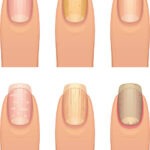A mild rash is a common skin condition that causes a noticeable change in the color, texture, or appearance of the skin. A mild rash can be red, pink, purple, brown, or white depending on your skin tone. It can also be flat, raised, bumpy, scaly, dry, or moist. A mild rash can affect any part of your body and may be itchy, painful, or irritating. A mild rash can have various causes, such as allergies, infections, irritants, or diseases. A mild rash can usually be treated with home remedies or over-the-counter (OTC) medications, but sometimes it may require medical attention.
Types of Mild Rash
There are many different types of mild rash, depending on their appearance and cause. Some of the common types are:
• Contact dermatitis. This is a type of mild rash that occurs when your skin comes into contact with a substance that triggers an allergic reaction or irritation. Common triggers include poison ivy, latex, nickel, cosmetics, soaps, detergents, perfumes, or plants.
• Eczema. This is a type of mild rash that occurs due to inflammation of the skin. It is also known as atopic dermatitis and often runs in families. It can be triggered by environmental factors such as dry air, dust mites, pollen, or stress. It usually affects the face, neck, elbows, knees, wrists, or ankles.
• Hives. This is a type of mild rash that occurs due to an allergic reaction to something you eat, drink, inhale, inject, or touch. It can also be caused by infections, medications, insect bites or stings, or stress. It usually appears as red or pink welts that are itchy and may vary in size and shape.
• Psoriasis. This is a type of mild rash that occurs due to an overactive immune system that causes rapid growth of skin cells. It can be inherited or triggered by infections, medications, stress, or injury. It usually affects the scalp, elbows, knees, lower back, or genitals.
• Viral rash. This is a type of mild rash that occurs due to a viral infection such as chickenpox, measles, molluscum contagiosum, or fifth disease. It usually appears as red, blistering, or scaly spots that may spread all over the body.
Symptoms of Mild Rash
Mild rash symptoms vary depending on the type and cause of the rash.
Some common symptoms that may accompany a mild rash are:
• Itching. This is a sensation that makes you want to scratch your skin to relieve discomfort. Itching can be mild or intense and can affect your sleep quality and mood.
• Pain. This is a sensation that causes discomfort or distress in your skin. Pain can be mild or severe and can affect your daily activities and performance.
• Burning. This is a sensation that causes heat or warmth in your skin. Burning can be mild or intense and can indicate inflammation or infection in your skin.
• Swelling. This is an increase in size or volume of your skin due to fluid accumulation or inflammation. Swelling can be mild or severe and can affect your appearance and mobility.
• Dryness. This is a condition where your skin lacks moisture and becomes rough, cracked, or flaky. Dryness can be mild or severe and can affect your skin health and elasticity.
Diagnosis of Mild Rash
To diagnose the cause of a mild rash, a doctor will usually perform a physical examination and ask about the history and symptoms of the problem. The doctor may also order some tests to confirm the diagnosis or rule out other possible causes. Some of these tests are:
• Skin scraping. This involves taking a small sample of the skin cells from the affected area and examining it under a microscope or sending it to a laboratory for further testing. This can help identify the type and cause of infection, such as fungus, bacteria, or parasite.
• Skin biopsy. This involves taking a small sample of the skin tissue from the affected area using a scalpel or a needle and examining it under a microscope or sending it to a laboratory for further testing. This can help identify the type and cause of inflammation, abnormality, or cancer in the tissue.
• Allergy test. This involves exposing the skin to small amounts of different substances that may trigger an allergic reaction and observing the response. This can help identify the specific allergens that cause the rash and guide the treatment and prevention strategies.
• Blood test. This involves drawing a sample of blood from a vein and measuring the levels of certain substances in the blood that may indicate inflammation, infection, autoimmunity, or metabolic disorders. Examples of blood tests include complete blood count (CBC), erythrocyte sedimentation rate (ESR), C-reactive protein (CRP), rheumatoid factor (RF), antinuclear antibody (ANA), iron, glucose, and thyroid hormones.
Treatment of Mild Rash
The treatment of mild rash depends on its cause, type, and severity. The main goals of treatment are to relieve symptoms, treat the underlying condition, and improve the appearance of the skin. Some common treatments for mild rash are:
• Medications. These can help treat infections, inflammations, or diseases that cause mild rash. They can be taken orally, topically administered, or injected into the skin. Examples of medications include antifungals for fungal infections, antibiotics for bacterial infections, antiparasitics for parasitic infections, corticosteroids for inflammatory conditions, immunosuppressants for autoimmune diseases, biologics for cancer, and antihistamines for allergic reactions.
• Skin care. This involves keeping the skin clean, moisturized, and protected from further damage or infection. It also involves avoiding irritants, allergens, or triggers that can worsen mild rash. It may also involve using gentle cleansers, moisturizers, sunscreens, or soothing agents such as aloe vera gel or oatmeal bath.
• Cosmetic procedures. These can help improve the appearance of the skin by covering up or removing mild rash. They can include makeup, creams, lotions, ointments, gels, sprays, patches, bandages, dressings, or surgery.
Home Remedies for Mild Rash
In addition to medical treatment, there are some home remedies that can help ease mild rash and promote skin healing. Some of these are:
• Cold compress. This involves applying a cold pack or ice wrapped in a towel to the affected area for 15 to 20 minutes several times a day. This can help numb the pain and reduce swelling and inflammation.
• Honey. Applying raw honey to the affected area can help prevent infection and speed up healing. Honey has antibacterial, anti-inflammatory, and antioxidant properties that can benefit the skin.
• Tea tree oil. Applying tea tree oil to the affected area can help treat bacterial and fungal infections due to its antibacterial and antifungal properties. It can also help reduce inflammation and pain in the skin.
• Baking soda. Applying baking soda to the affected area can help relieve itching and irritation due to its alkaline nature. It can also help dry out blisters and reduce inflammation in the skin.
When to See a Doctor
Mild rash is usually not a medical emergency, but it can be a sign of a serious condition that requires prompt diagnosis and treatment. Some situations when it is advisable to see a doctor for mild rash are:
• The mild rash is severe, sudden, or unexplained.
• The mild rash is accompanied by fever, chills, rash, weight loss, or other signs of infection or systemic illness.
• The mild rash is caused by an injury that results in bleeding, infection, or scarring.
• The mild rash persists for more than two weeks despite home remedies and OTC medications.
• The mild rash interferes with daily activities and quality of life.
Summary
Mild rash is a common skin condition that causes a noticeable change in the color, texture, or appearance of the skin. Mild rash can be red, pink, purple, brown, or white depending on your skin tone. It can also be flat, raised, bumpy, scaly, dry, or moist. Mild rash can affect any part of your body and may be itchy, painful, or irritating. Mild rash can have various causes, such as allergies, infections, irritants, or diseases. Mild rash can usually be treated with home remedies or over-the-counter (OTC) medications, but sometimes it may require medical attention. In this blog post, we explored some of the common types, causes, symptoms, and treatments for mild rash.



